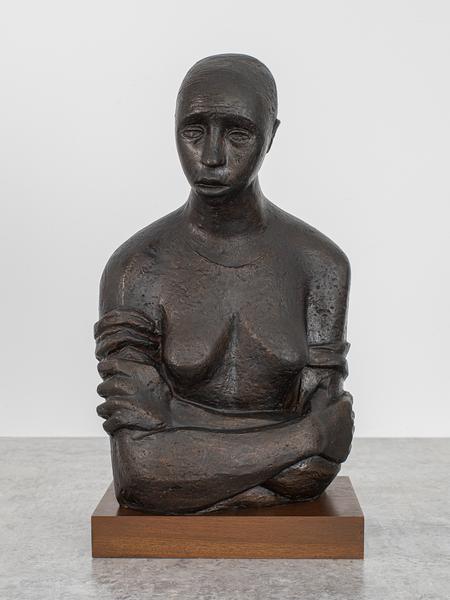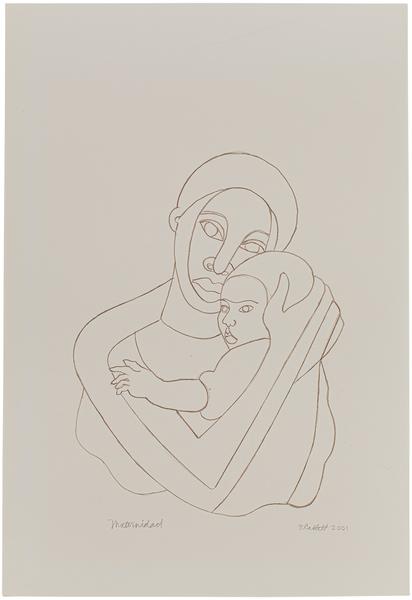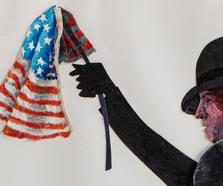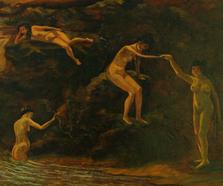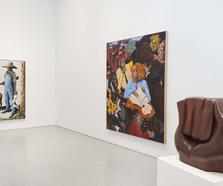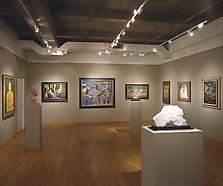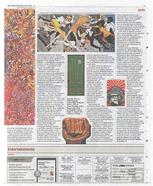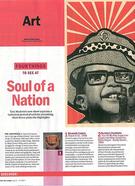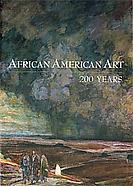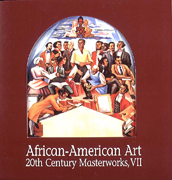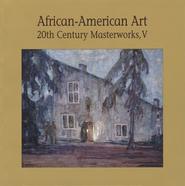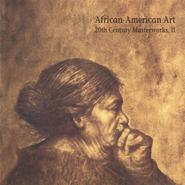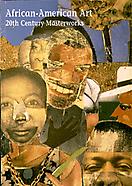Elizabeth Catlett is known for her unfaltering commitment, in her art and in her life, to the cause of social justice. The granddaughter of slaves, Catlett was denied admission to the Carnegie Institute of Technology in the 1930s due to racial discrimination. She instead enrolled at Howard University, where she studied painting and design, receiving her B.A. with honors in 1935. Catlett continued her fine art studies at the University of Iowa, where she worked with Grant Wood, who encouraged her to experiment with a variety of media and to represent the world she knew best. In 1940, Catlett received the university’s first M.F.A. degree, and in the fall, she became head of the Art Department at Dillard University in New Orleans, where for two years, she consistently challenged the South’s segregationist policies. She spent the summer of 1941 studying sculpture at the Art Institute of Chicago and lithography at the South Side Community Art Center. In 1942, she left Dillard for New York City, where she studied lithography at the Art Students League and sculpture with Ossip Zadkine. During this time, Catlett remained active as an educator, teaching sculpture and sewing at Harlem’s populist George Washington Carver School, which later led to anti-Communist accusations against her. In 1946, Catlett traveled to Mexico City with funding from a Julius Rosenwald Fellowship. She became a member of the Taller de Gráfica Popular and completed her famous series of linoleum cuts, The Negro Woman. In Mexico, Catlett found refuge from political and racial discrimination and decided to move there. In the 1960s, she was a vocal supporter of the Black Power movement, and after she became a Mexican citizen in 1962, the U.S. government declared her an “undesirable alien” and denied her a visa for nearly a decade. Although her talent has been extensively recognized in Mexico, Catlett received little attention in the U.S. until a 1993 show at the June Kelly Gallery, after which several major museums purchased her work. The U.S. restored her citizenship in 2002, and Catlett currently divides her time between Cuernavaca and New York. Over the last decade, Catlett’s career has been celebrated in museum exhibitions and monographs including the 2000 book Elizabeth Catlett: An American Artist in Mexico.
Elizabeth Catlett (1915-2012)
Exhibitions
New & Noteworthy
Prints & Publications
Artist Information
SELECTED MUSEUM COLLECTIONS
Art Institute of Chicago, Chicago, IL
Arkansas Art Center, Little Rock, AK
Butler Institute of American Art, Youngstown, OH
Canton Museum of Art, Canton, OH
Cincinnati Art Museum, Cincinnati, OH
Cleveland Museum of Art, Cleveland, OH
Columbia Museum of Art, Columbia, SC
Crocker Art Museum, Sacramento, CA
Crystal Bridges Museum of American Art, Bentonville, AR
DePaul University Museum, Chicago, IL
Hammonds House Museum, Atlanta, GA
Harlem Art Collection, New York State Office of General Services, Albany, NY and
New York, NY
Howard University Art Collection, Washington D.C.
Kalamazoo Institute of Arts, Kalamazoo, MI
Kresge Art Museum at Michigan State University, East Lansing, MI
Metropolitan Museum of Art, New York, NY
Museum of Fine Arts, Boston, MA
Museum of Modern Art, New York, NY
Muskegon Museum of Art, Muskegon, MI
National Museum of Women in the Arts, Washington D.C.
Philadelphia Museum of Art, Philadelphia, PA
The Rhode Island School of Design Museum, Providence, RI
San Francisco Museum of Modern Art, San Francisco, CA
Smithsonian American Art Museum, Washington D.C.
Yale University Art Gallery, New Haven, CT

